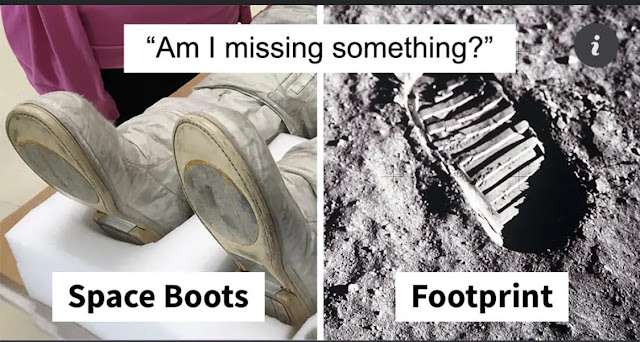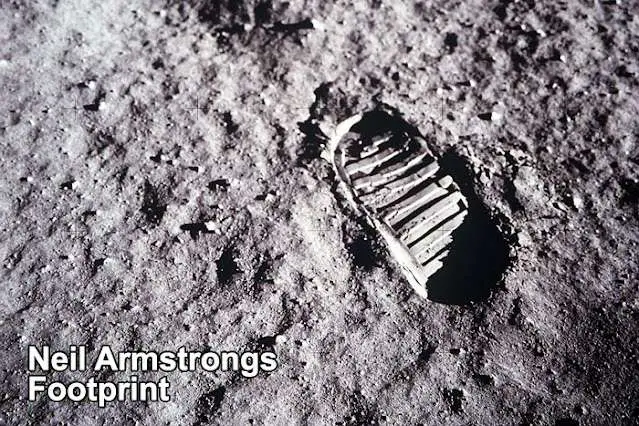
Introduction
Conspiracy theories surrounding the Apollo moon landings have persisted for decades, with skeptics continuously finding new angles to cast doubt on one of humanity’s greatest achievements. Recently, a new claim emerged suggesting that the famous first steps on the moon don’t match the boots worn by Neil Armstrong, the first human to set foot on the lunar surface. However, these claims were swiftly debunked with irrefutable facts and evidence.
The Claim
Mismatched Footprints?
The claim originated from an online post that compared photos of the lunar footprints with images of Neil Armstrong’s spacesuit boots displayed in museums. The post argued that the tread patterns on the moon didn’t match the soles of Armstrong’s boots, insinuating that the footprints were faked or left by someone else.
The Facts
Boot Covers: The Crucial Detail
The key fact that debunks this claim lies in the design of the Apollo spacesuit. While the photos of Armstrong’s spacesuit in museums show smooth-soled boots, these are the pressure garments designed to be worn inside the spacecraft and lunar module. For extravehicular activity on the lunar surface, astronauts wore additional overshoes, known as lunar overshoes, which had distinct tread patterns designed for traction on the moon’s surface.

Lunar Overshoes Explained
Lunar overshoes were an integral part of the Apollo spacesuits. Made of high-strength materials to withstand the harsh lunar environment, these overshoes featured a rugged tread pattern to provide stability and grip on the moon’s fine, powdery regolith. These are the soles that left the iconic footprints visible in photos from the moon landings.
Museum Displays and Context
When displaying historic artifacts like Neil Armstrong’s spacesuit, museums often choose to exhibit the pressure garment without the overshoes to highlight the complexity and design of the suit. This can lead to confusion for those not familiar with the full configuration of the lunar gear. However, comprehensive records and numerous photographs from the Apollo missions clearly show the use of lunar overshoes by astronauts during moonwalks.
Additional Evidence
Photographic Documentation
Extensive photographic evidence from the Apollo missions provides a clear record of the astronauts’ activities on the moon. Images and videos show astronauts wearing the complete extravehicular suit, including the lunar overshoes, and leaving footprints that match the tread pattern of these overshoes.

Testimonies and Reports
Numerous testimonies from NASA engineers, astronauts, and mission planners support the use of lunar overshoes. Detailed mission reports and technical documents from the Apollo program describe the design, purpose, and use of the overshoes, further corroborating the explanation.
Scientific Analysis
Scientific analysis of the lunar soil and the mechanics of lunar surface activity also supports the authenticity of the footprints. The unique properties of the moon’s regolith and the conditions of the lunar environment make it highly unlikely that the footprints could have been faked or left by anything other than the designed overshoes.
Conclusion
The claim that Neil Armstrong’s footprints on the moon don’t match his boots has been thoroughly debunked with clear and irrefutable evidence. The misunderstanding stems from a lack of knowledge about the complete Apollo spacesuit configuration, particularly the use of lunar overshoes. When examined in the full context of the mission, it becomes evident that the footprints were indeed left by Armstrong and his fellow astronauts, as documented in the extensive records and photographs of the Apollo program.
The persistence of such conspiracy theories highlights the importance of critical thinking and the need for thorough research before jumping to conclusions. The achievements of the Apollo missions stand as a testament to human ingenuity and exploration, and the facts unequivocally support the historic reality of humanity’s first steps on the moon.
